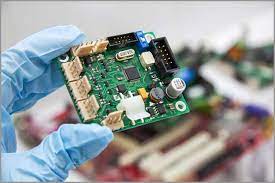The Ultimate Guide to Electronic Hardware: From Microcontrollers to PCB Design

About Course
Dive into the fascinating world of electronic hardware with this all-in-one guide designed to take you from beginner basics to advanced design! Whether you’re curious about how gadgets work or you’re preparing to build your own smart device, this course breaks down complex concepts into easy-to-understand lessons. Learn how electricity flows through circuits, what microcontrollers do inside your favorite tech, and how printed circuit boards (PCBs) bring your electronics to life.
From soldering your first prototype to crafting professional-grade PCBs and debugging intricate circuit problems, this course is your gateway to becoming confident in modern electronics. With real-world applications, hands-on insights, and guidance through emerging technologies, you’ll be equipped to create, test, and improve hardware like a pro. Whether you’re an aspiring engineer, hobbyist, or tech entrepreneur—this guide will empower your innovation journey!
Course Content
Introduction
Definition of electronic hardware
00:00Importance of electronic hardware
00:00Overview of the guide
00:00